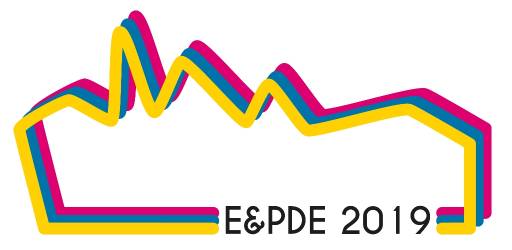ACQUIRING DESIGN LANGUAGE: CREATIVITY OF EXPERIMENTAL INK SEMANTICS CONVERSION IN DESIGN EDUCATION
Du, Bo (1,2); Nagai, Yukari (1); Kim, Eunyoung (1); Yuizono, Takaya (1); Wang, Manqian (2)
Type:
Year:
2019
Editor:
Bohemia, Erik; Kovacevic, Ahmed; Buck, Lyndon; Brisco, Ross; Evans, Dorothy; Grierson, Hilary; Ion, William; Whitfield, Robert Ian
Author:
Series:
E&PDE
Institution:
1: Knowledge Science, Japan Advanced Institute of Science and Technology; 2: National Demonstration Centre for Experimental Fashion Design and Engineering Education, Dalian Polytechnic University
Section:
Cultural 1
DOI number:
ISBN:
978-1-912254-05-7
Abstract:
Design requires a heterogeneous mixture of culture and linguistics and is a tool for visual communication. The charm of language is mainly reflected in the accuracy and uniqueness way through which information is disseminated. To acquire competencies with a design language is to seek processes that convey information about creative thinking in practical courses. The ability to develop students’ creativity in such a practical process is the most important component of art and design education.
Ink as an extension tool of design language development is highly creative and flexible, allowing for quick and easy recordings of the designer’s ideas. In the setting of the undergraduate’s foundation design core curriculum of the design school, uses the ink painting tool to unlock the experimental method of the creator’s personality, freely exert the imagination of the young students, and ignite the students’ initial love for the design. On one hand, in the education process, the emphasis needs to be put on the creative abilities of water-ink art, which allow for the adequate preservation of the emotions derived from the designer’s visual and dynamic experiences. It is conducive to the development of imagination in the semantic transformation of ink. On the other hand, inspired by the uniqueness of the ink language, design language extractions from observation generalize and refinements, the inspirational elements of design thinking are quickly conveyed. Efforts also need to be put into the expression of these ideas through the medium to allow for the creation of modern design works. By doing so, the intrinsic value and artistic thinking of water-ink art can be integrated into the design work and contribute to its cultural richness.
The goal of the following text is to propose a method of curriculum design. And to showcase demonstrate the process of creative thinking practice in design language and to present the possibilities of water-ink art in educational activities. Practical examples analyses are provided as to how to integrate water-ink experiments into creativity design area, which culminates in the transition from design elements into unified information with practical value. Use this method to support solutions in design education, open up new horizons to achieve a new innovation landscape. The formation and application of the concept of experimental water-ink semantics in creative design education have led to the conversion of modern semantic expression, which leads to innovation in the process of creative design education. The formation of design semantics is the acquisition of individual semantic design language produced by students in the commonality of educational practice. Furthermore, by implementing these measures at the origin of the creative process, the issue of insufficient creativity in later phases is solved. The design is not only a form of diversity but also a particularity of regional culture. Through the design language conveys cultural elements, the design works are made easier to resonate with, and thus the cycle of creativity and design education is perpetuated.
Keywords:





